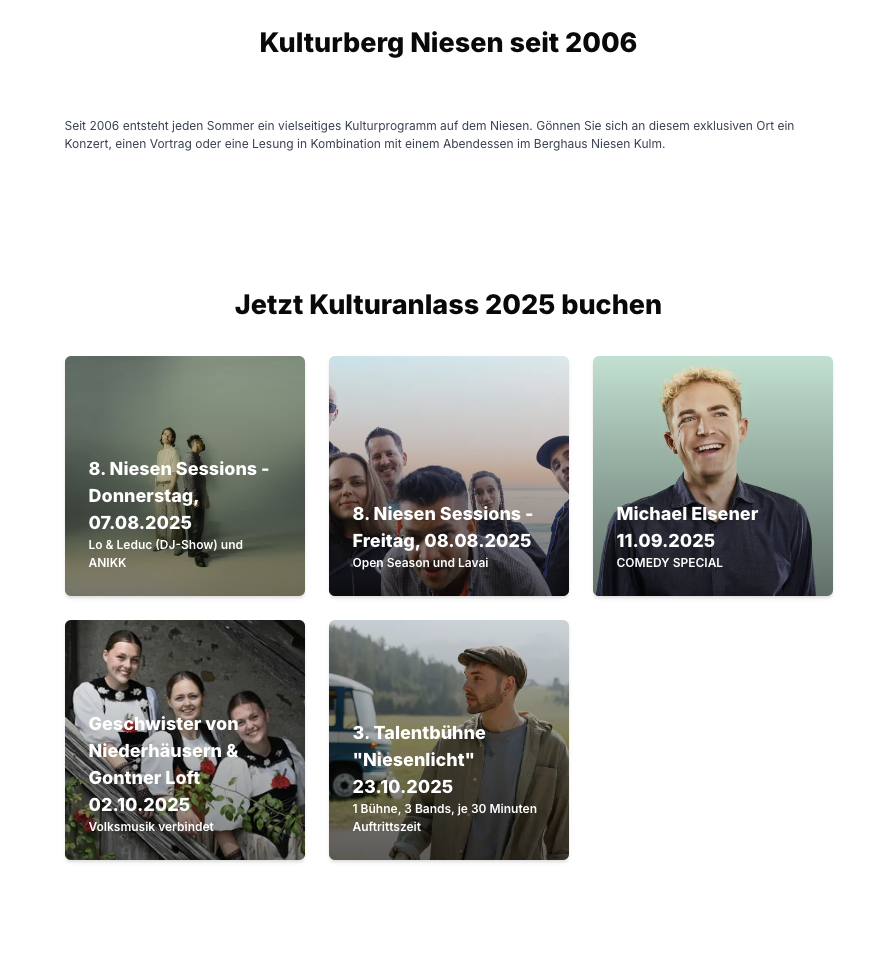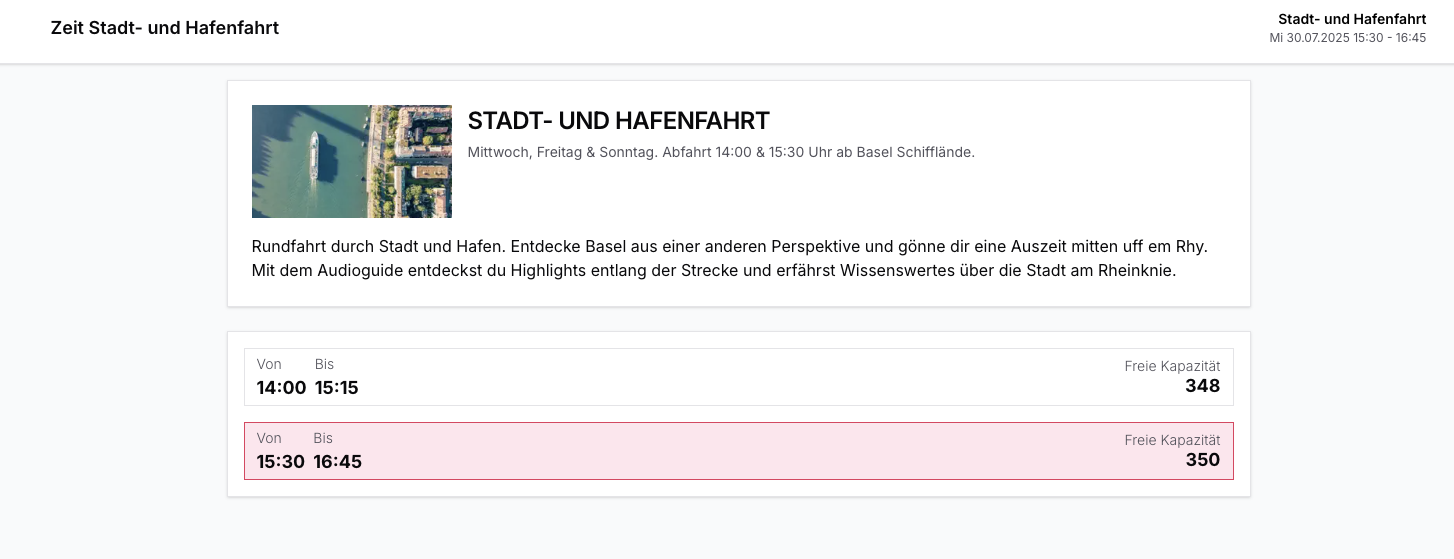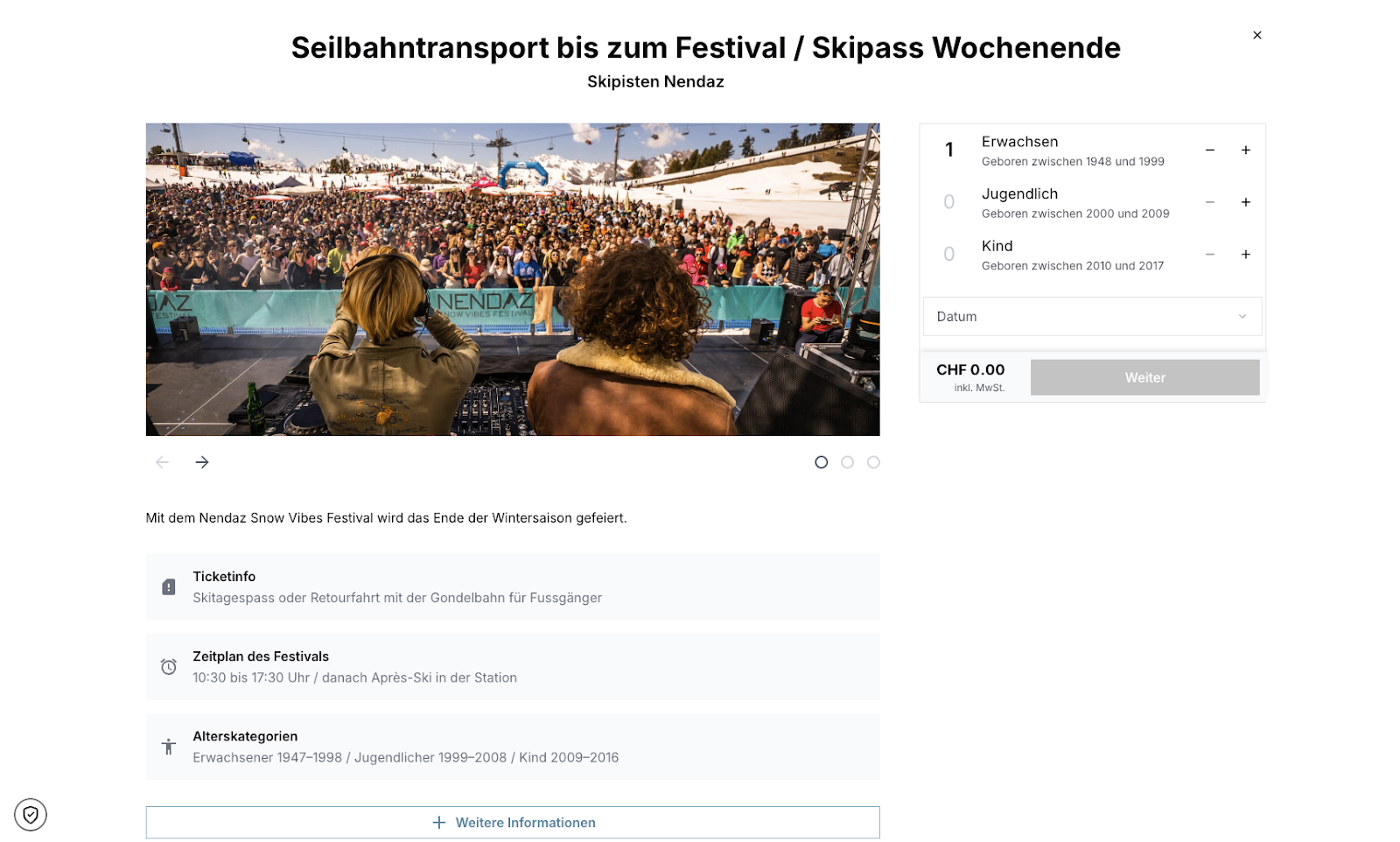With the Eurovision Song Contest, Basel became Europe's stage for a few days in spring — a temporary event that attracted thousands, shaped media and restaged the city. In the middle of the stream was 'uff em Rhy — a public viewing on the Rhine that not only mobilized visitors but also the population.
Such experiences show what events can do in the right context: generate attention, activate target groups and shift demand — in the shortest possible time. The principle behind this is by no means new: In the experience economy — as defined by Pine & Gilmore back in 1999 — it is no longer just products or services that count, but emotions, participation and storytelling.
What does this mean for tourist providers such as mountain railways or spas? Clearly, experiences — whether unique or recurring annually — are a strategic tool for standing your ground in the competition. If properly designed, events have an effect far beyond the actual day of implementation: They create reach, fill off-peak periods and strengthen the brand.
But to utilize their full potential, events must be digitally embedded — in a seamless customer journey, dynamic pricing, and intelligent control. This is exactly where this contribution comes in.
Why events? The strategic value of recurring and temporary experiences
Events in alpine tourism have long been more than just entertainment — they are a tactical means of controlling frequency, activating target groups and emotionally charging brands. The spectrum ranges from small event formats to large-scale festivals — with measurable influence on demand.
Three key added values at a glance:
1. Expand target groups
Formats such as music nights, waterslide contests or food festivals make it possible to appeal to new groups of guests — in particular younger, urban target groups who are difficult to reach with traditional cable car or wellness offerings.
2. Increase utilization during off-seasons
Events have the effect of a demand push — especially in months with traditionally low utilization.
Example: The Snow Vibes Festival in Nendaz (annually, mid-April) moved over 2025 10,000 visitors on.
- Regular tickets: nearly 70% utilization
- VIP packages: via 90% utilization
This shows that a well-placed event can not only secure basic workload, but also activate premium categories and generate additional revenue.
Even small formats have an effect: The Titlis Waterslide Contest (April 2025) was completely booked out with 80 starting places — proof that even small experiences can provide targeted demand impulses.
3. Strategic positioning and retention
Events are not just a sales channel, but a means of differentiation:
- Positioning as an innovative provider: Anyone who digitally integrates events, offers flexible ticket categories (e.g. standard/VIP) or combined packages with catering sends a clear signal of innovation and stands out from competitors.
- Emotional attachment and social proof: Events create stories, content, and interaction. Guests share their experiences, mark organizers and recommend — which strengthens brand loyalty in the long term.
“Temporary forms of offer such as events increase brand sympathy, strengthen customer loyalty and create differentiation in saturated markets. ”
— Heribert Meffert, Marketing (12th edition)
But events cannot be taken for granted. In addition to creative ideas, a well-thought-out digital infrastructure is needed to keep organizational costs under control. This is exactly where many tourism providers are still reaching their limits today.
From additional expenditure to added value: What makes events digitally controllable
What inspires guests sometimes pushes businesses to their limits. Because events cannot be managed with Excel and improvisation — at least not efficiently.
Typical weak points — from the everyday life of tourist businesses:
- No consistent ticketing — media disruption for the guest
A classic: The cable car ticket is available online, but the event ticket is only available by telephone or on site. Guests have to go through several booking steps — or, in the worst case, stand in line. Result: lost conversions, poor service experience. - Manual processes — no real-time capacity control
Anyone who manages events with Excel lists or paper forms dispenses with central control mechanisms:
→ How many seats are still available? What happens if the weather is bad? How do we react to no-shows?
Without slot management, these questions remain unanswered — at the expense of quality and safety. - No uniform customer access — fragmented touchpoints
Guests book admission online, reserve the event via e-mail and report special requests by telephone. There is no consistent customer flow — and no consolidated view of customer behavior. This prevents both targeted marketing and personalized services.
Complexity in simple use cases — examples from everyday life
Simple experiences in particular could have a big impact with little effort — if systems work together seamlessly. In reality, however, the potential is often wasted:
- Sunrise trip with breakfast (example: sneeze)
Without integration, guests book the ticket in the web shop, reserve breakfast via email and receive weather information separately.
With an integrated ticket shop like Niesen, everything goes in one step: seat reservation, allergy information, preferred location — even a personal greeting (including “How was the journey from Zurich? “) is taken into account thanks to system integration.

- Gastrosystem connection (e.g. Aleno)
Companies such as Bergbahnen Sörenberg or Basel passenger shipping companies use tools such as Aleno for direct catering integration. This not only increases predictability, but also improves service quality and efficiency — for example in terms of placement, occupancy and kitchen management.

- Children's birthdays as a use case for individualization
With a flexible e-commerce solution, parents can easily specify the number of adults & children as well as allergies, for example. Additional services — cakes, snacks, slides, mascots — can be booked directly. In the background, the information is automatically divided:
→ Admission tickets, catering, animation.
The result: individual packages with little effort — a clear competitive advantage.
Operational reality: When digitization is missing
In many companies, events involve manual effort and uncertainty. Lists of participants are printed out, guests are registered several times, special requests are overlooked.
Especially in times of scarce personnel resources, this creates an unnecessary bottleneck — of all places where quality of experience would be decisive.
Digital integration instead of stand-alone solutions: How Pricenow makes events bookable, controllable and scalable
Events are successful when they not only feel good — they also work operationally. Our platform is designed to host events as a regular part of the range to be dealt with: with combinable products, clear booking logic and smart control — before, during and after the event.
E-commerce solution: combinable, expandable, customizable
With Pricenow, events can not only be sold online — they become part of a continuous booking process, which does not confuse guests, but rather convinces them.
- Central booking process: Whether it's a mountain trip, brunch or festival pass — everything can be booked in one step, on one interface, without media disruption.
- Cross- & upselling logic: Events can be integrated into other product lines — as with Snow Vibes Festival, which was shown as an upgrade in the ski pass checkout.
- Individual offer logic — children's birthday party example:
Guests flexibly choose the number of children & adults, indicate incompatibilities and book additional services such as cake, beverage packages or mascots. It is automatically divided in the background: tickets for admission, ordering for catering, booking for the show element.
→ The result is an individual but automated offer — bookable with one click. - Service quality through system integration — Niesen/Sörenberg example:
In combination with the catering system, the booking is fed directly into the operational process. At the breakfast event on Niesen, for example, guests are greeted by name, individual wishes taken into account — and planning in the F&B team is massively simplified.
Demand-oriented pricing: predictable, controllable, configurable
Our pricing engine can represent classic models as well as dynamic scenarios — controllable over time, demand or package logic.
- Slot & capacity management: How many seats are available per event or category? This can be defined and controlled flexibly — even with weather-dependent offers.
- Product bundling with centralized control:
At Snow Vibes Festival A joint quota was used — but sold differentiated: day pass, VIP, weekend. As a result, booking & management remain flexible — without the risk of overbooking.

- Early bird discount without complex dynamics:
Discounts are easy to map using time curves — around 25% discount, which is automatically reduced 30 days before the event. Easy implementation, clear logic, no additional effort.
Data analytics solution: live control instead of retrospective
Events can only be operated efficiently if the data is available and usable in real time. Pricenow delivers exactly that:
- Live data for event management: Booking curves, cancellation behavior, weather conditions — everything at a glance. This enables targeted responses in advance, e.g. with reminder mailings when advance sales are weak.
- End-to-end event management:
- Access via QR code (also for VIP zones, restaurants, etc.)
- Ticketing & Validation app: e.g. distribution of goodie bags only for certain categories
- CRM connection: Segmentation by target group, e.g. for follow-up campaigns
- Custom event landing pages — with your own content, look & feel
- Access via QR code (also for VIP zones, restaurants, etc.)
- Flexible booking on site — even for last-minute travelers:
Whether you decide spontaneously, local partners or laggards — with the Admin Booking feature, tickets can be created directly on site, without having to go through the regular cash register or a separate sales tool. A tablet or smartphone is all it takes to create and assign bookings in seconds.
What else needs to be solved with Excel lists, ticket islands and manual effort can be controlled centrally and automatically with Pricenow. For guests, this means a consistent experience — for providers, high scalability with maximum overview.
Events are worthwhile — when they are thought of systematically
Events cannot be taken for granted. They involve effort in planning, communication and operational implementation. But it is precisely this effort that can pay off twice: for guests who are impressed — and for companies that generate measurable added value.
Because: Anyone who digitally integrates events does not create an additional product, but strategically expands their range of products. It appeals to new target groups, extends seasons, uses emotional moments for commitment and differentiation — and finally makes experiences bookable, controllable and scalable.
Three key learnings from practice:
- Event integration requires a central system
Different tools, fragmented touchpoints, or manual lists lead to unnecessary complexity. Only those who manage booking, access and communication from a single source can efficiently operate — and scale — events. - Events are a proven lever for shifting demand
Whether off-season formats or target group-specific specials — events create demand where gaps otherwise arise. Particularly effective when combined with pricing and sales logic. - Networking creates synergies — as the example of Snow Vibes shows
Nendaz is planning the Snow Vibes Festival for the coming year to be linked even more closely to the annual pass: Card holders receive discounted tickets — directly upon purchase or via discount code.
This not only strengthens the festival itself, but activates additional product ranges, improves customer loyalty and increases the relevance of the annual pass in sales.
Analyze your existing event formats — and see how they can be digitally integrated, booked smarter and monetized better.
We are happy to assist you with this.
contact
Source citations
- BPG Basel passenger shipping (2024): ESC Basel — “Oof em Rhy”.
https://bpg.ch/esc - Nendaz Veysonnaz Tourisme (2025): Snow Vibes Festival — official ticket shop.
https://shop.nendazveysonnaz.ch/de/snowvibes - Titlis mountain railways (2025): Titlis Waterslide Contest — event overview.
https://www.titlis.ch/de/waterslide-contest - Pine, B.J. & Gilmore, J.H. (1999): The Experience Economy. Harvard Business Press.
- Meffert, H. (2019): Marketing — Basics of Market-Oriented Business Management (12th edition). Springer Gabler.
- Project experiences with Niesen AG, Sörenberg Bergbahnen and BPG — best practices from Pricenow (2023—2025).


.jpeg)
